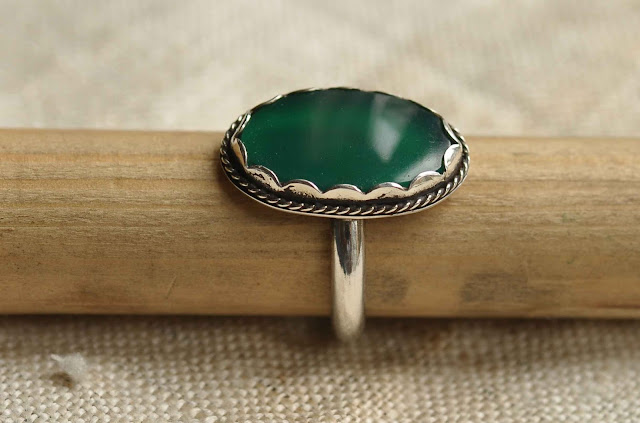My lovely friend Sharon asked if I would make her a necklace to resemble a miniature oak leaf she had found in her garden. The leaf is the size of my smallest fingernail, and quite perfect!
She gave me some old gold jewellery to melt down, pieces that had sentimental value, but that she wasn't going to wear again. Hmmmm, no pressure then.....
I have melted lots of silver but only very small pieces of gold before, and had no idea how difficult it would be to melt larger peices of gold. It seemed to take forever, with my fiercest burner on my torch, and just wouldn't melt fully. I tried it on my solder block, on my charcoal block and in a clay crucible. I googled it , with visions in my head of ruining my friends jewellery with nothing to show for it. Apparently it needs flux to melt and is also best done in a graphite crucible. I got a crucible from ebay for a few quid and had another go after adding flux to the gold. It was slightly better but I still couldn't get it molten enough to flatten it to go through my rolling mill. I ended up with a blob of gold, too fat to go through the mill. I resorted to sawing it through the middle and finally had a piece thin enough to roll in the mill. It took about half an hour and lots of huffing and puffing to saw through it. Phew, I was relieved to at last have piece to work with.
I put it through the rolling mill again and again, tightening the rollers as I went and annealing the gold to keep it soft. I got it down to about 2mm thickness and large enough to cut the leaf I wanted.
Next step was to cut the shape with my saw, with a thicker blade than I usually use. I captured the precious gold dust in my leather square that I keep on my lap when sawing.
Looks pretty rough at this stage, but I know I can turn this into something beautiful now. The next stage is to imprint the leaf pattern. This is done in the rolling mill with a synthetic leaf skeleton. The gold needs to be annealed and soft to get the best imprint, and I am careful to make sure the main spine of the leaf runs down the length of the rough gold leaf shape.
Looking good at this point, very happy with it. I put double sided sellotape and a piece of latex glove on the imprinted side to protect the pattern while I work on the edges.
It takes some time with sandpaper, files, and emery boards to get the edges smooth and soft and rounded, all the while being careful not to mark the pattern or the back. Next stage is to attach a bail. I use a piece of gold wire from a gold padlock, and hammer it a little to resemble the stalk of the leaf. Fiddly to attach, but being a leaf it doesn't have to be perfect. The last thing I do is curl it in a leaf like fashion using my pliers, protecting the surface from the pliers with a piece of thin leather.
It then goes into the tumbler for a few hours then I give it a final polish with rouge and my Dremel. I love how it has come out!






































.JPG)

.JPG)
.JPG)
.JPG)
.JPG)
.JPG)
.JPG)
.JPG)
.JPG)
.JPG)